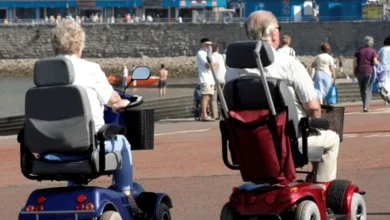The Berkey: Helping People Survive Water Emergencies

What comes to mind when you think of water emergencies? Perhaps your thoughts drift to stories from the nightly news depicting areas in foreign countries that have been ravaged by earthquakes or typhoons. Maybe you think of more localized events, like coastal cities hit hard by hurricanes and storm surges or areas affected by flooding from heavy rains. Those events can cause water and sewer line destruction and a complete loss of utility services. They devastate homes and families and cause millions of dollars in damages.
Those issues and many others certainly qualify as water emergencies. In some cases, the destruction takes weeks, months, or even years to fully reverse even though utility crews are hard at work around the clock to restore infrastructures. It doesn’t necessarily take a natural disaster to bring about such a situation, though. In fact, events that are classified as water emergencies are happening more frequently across America, and they’re expected to grow increasingly common moving forward. Travel water filters like The Berkey may help people survive water emergencies.
Taking a Closer Look at Water Emergencies
With all that being said, you may be wondering just what constitutes a water emergency. In reality, several situations can fall into that category. Any instance in which clean, fresh drinking water is in short supply could be considered an emergency, making survival difficult or even impossible without the right knowledge and resources. Take a look at some common situations that could be classified as water emergencies.
Camping Catastrophes
More than 90 million families in America go camping from time to time according to a recent report. An estimated 60 million enjoy camping at least once a year, and a significant portion of those plan camping expeditions as often as they possibly can. Additionally, the number of people discovering the joys of camping has been on an upward trend for quite some time, so those figures are sure to grow moving forward.
It’s important to mention here that people have different opinions of just what counts as camping. After all, there are numerous options to choose from at this point. Most people simply stock their fully appointed campers or motorhomes with plenty of food, snacks, and other amenities and head to a designated campground. Others insist that’s not really camping at all; it’s only camping if you’re roughing it with tents, sleeping bags, and the bare necessities.
In either of those groups, the most common option is to make reservations at a campground that’s equipped with power and water connections at each campsite. All you have to do once you get there is tap into those utilities. Many people wonder just where the water flowing through the pipes comes from, though. Is it really safe?
On the other hand, what happens if you’re taking part in true wilderness camping with no utilities available? Bottled water can only last for so long, especially during those long, hot summer days. Keeping a travel water filter on hand when camping could help thwart minor water emergencies like those.
Hiking Hazards
Millions of people enjoy hiking, rock climbing, and similar outdoor activities. Few experiences can compare to getting in touch with nature and being far away from the constant noise, chaos, and pollution of the city. Out in the wilderness, it’s peaceful, and fresh air is abundant. If there’s no cell phone reception or internet signal, that only enhances the experience. You get to enjoy peace and quiet, the beauty of the world around you, and the satisfaction of surviving on your instincts.
Still, water is essential for survival. That’s particularly true when exerting more energy than usual. The human body can easily become dehydrated without proper fluid intake. In everyday scenarios, people should consume at least half a gallon of water per day. With increased physical activity, that amount doubles. What happens if you get lost out there in the wilderness? The very factors that make outings like those so appealing could be the same ones that lead to disaster.
It’s only possible to carry along so much bottled water on hiking trips and other outdoor adventures. There are plenty of lakes and streams nearby, though. Filling up a water bottle from one of those natural reserves is no problem. Why not just draw from what nature provides?
That’s a perfect solution in theory. Lakes, rivers, and streams are freshwater supplies rather than saltwater bodies, so they’re safe to drink. That’s what many people think, and far too many have suffered the consequences of their misconceptions. Water contamination is increasingly widespread these days. Freshwater sources only account for about one percent of the water on the planet, and studies show that half of those in the U.S. are too polluted for swimming and drinking at this point.
Keep in mind that just because water looks clear and has no offensive odor doesn’t necessarily mean it’s safe for human consumption. Millions of contaminants could be lurking in supposedly fresh water. Those include chemicals, bacteria, parasites, and microorganisms. All of them can cause serious health issues. While some of them take their toll gradually and are only harmful after they build up in your system, others’ effects are quick to take hold and quite dangerous. Again, having a travel water filter available can save the day and possibly a few lives.
Water Main Breaks
Water main breaks also create emergency situations. We routinely see headlines about America’s aging power grid bringing about increased electrical outages. When it comes to the nation’s water infrastructure, though, the true seriousness of the matter is more elusive. In reality, water lines across the country are breaking down due to age and a greater workload than they’re capable of handling.
Although crews are working hard to try to stay on top of the deterioration, there just aren’t enough workers to resolve the problems. In many cases, the deterioration goes unnoticed or unrepaired until it’s too late. As a result, water mains break, and entire neighborhoods, or even cities, are left without water. According to the latest reports, around 240,000 water main breaks occur each year in the United States, and that figure is expected to grow in the years to come.
Have you ever faced a situation like that? A water main break may sound like a minor issue on the surface, but its effects can run far deeper than most people realize. Everyone in the affected area is left without running water. Children in local schools can’t wash their hands to get rid of germs. Hospitals are left with few options for maintaining safety and sanitation. Restaurants have to shut down in the wake of a water main break. On top of all that, people can’t bathe, wash dishes, or do laundry in their own homes, and no one can simply turn on the tap for a glass of water.
Like many people who haven’t experienced something like this firsthand, you may be saying, “So what? I’ll just run to the store and pick up a few gallons of distilled water for cleaning and a few packs of bottled water to drink until water service is restored.” Ideally, that would be the right approach, but remember that everyone else in the area is thinking the same thing. Unfortunately, as the pandemic taught us, the world is rife with an every-man-for-himself mindset.
In all likelihood, you’ll get to the store to buy water and be met with disappointment. Store shelves will be stripped clean of all manner of packaged water thanks to the scared souls who arrived before you. Don’t worry, though, depending on the severity of the outage, the National Guard may be along in a couple of days with tanks of clean water. If you get to them before other local residents, you may be able to get a few jugs of water to float your family through until the problem has been resolved.
On the other hand, you could use a travel water filter to survive during a water outage. It’s always a good idea to keep a few clean, empty containers on hand for unexpected situations. Those can be empty milk or juice jugs, tightly covered pitchers or drink dispensers, and other items meant to safely and securely store fluids. Clean them thoroughly, and keep them tightly closed during storage to keep out contaminants.
If faced with an extended water outage, load those containers into your vehicle along with your travel water filter and head to the nearest freshwater supply whether it’s a lake, river, or small stream. With a travel filter, you can weed out harmful contaminants and produce clean, safe water for your family to use. Though local stores and other resources may fall short during emergencies like these, there’s no reason you can’t take care of your family.
Surviving Water-Related Emergencies
Those are a few of the more common situations that can quickly evolve into water emergencies. At this point, any number of scenarios could arise, leaving people without clean drinking water. We’ve all come to depend on a constant supply of tap water to draw from, but it may not always be there. Keeping a travel water filter on hand may not solve all the problems a water-related emergency brings about, but it can certainly help your family survive during such a crisis.







